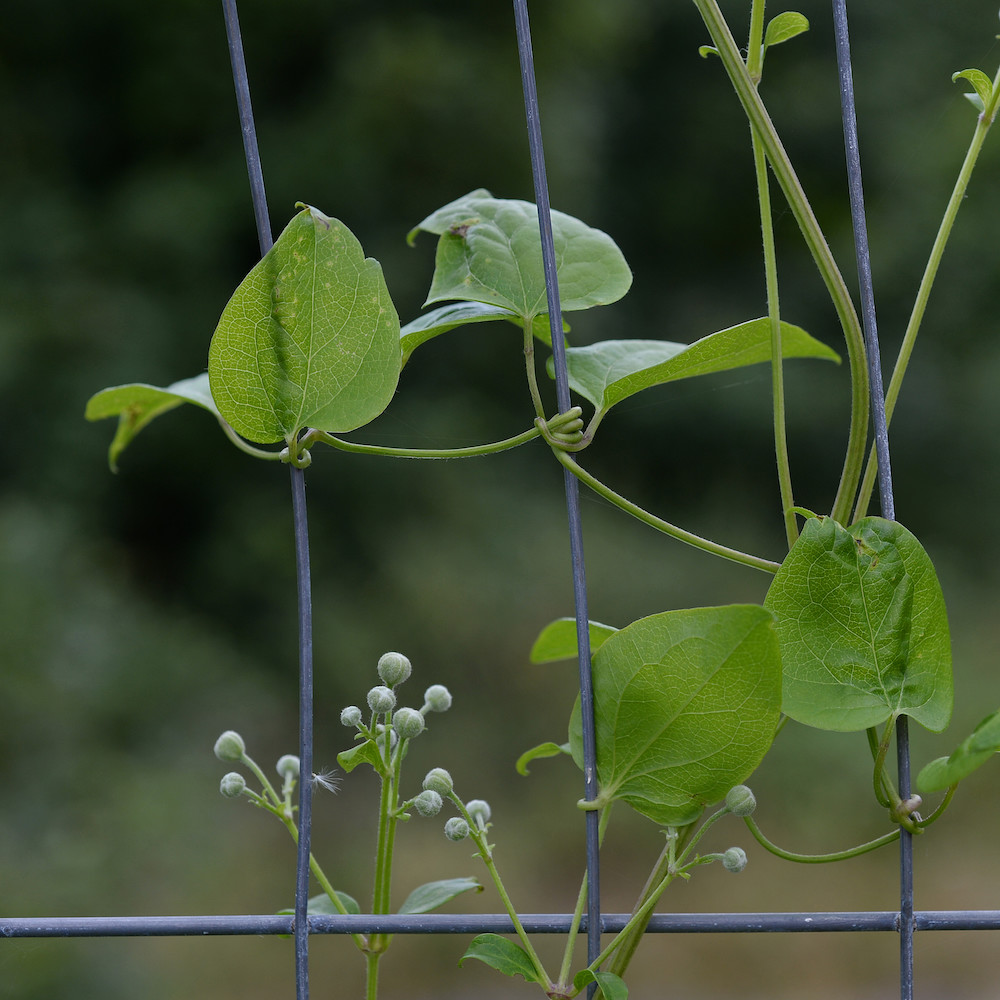
It is a joy to find our only native clematis scrambling through a hedge or fence.
Photo: © Natural England/Peter Roworth
Scientific name: Clematis vitalba
Other common names: Old-man’s-beard, Father Christmas, Smokewood, Baccy Plant, Woodbine, Love Vine, Virgin’s Bower
What to look for:
- Family: Buttercup (Ranunculaceae)
- Flowers: Scented green-white flowers (2 cm across) with four sepals (it has no petals), growing in clusters.
- Leaves and stem: Woody climbing branched stems with fibrous bark. The stems are grooved. Leaves opposite and compound (pinnate).
- Length: Up to 30 m
- Where: Usually found scrambling through hedgerows; on chalk, limestone, basic soils. Common in England and Wales south of the Humber and Mersey; introduced elsewhere.
- When: The flowers appear in July and August, followed by the distinctive feathery, fluffy seedheads in autumn and winter.
- Habit: Shrubby climber
Traveller’s-joy, or Old-man’s-beard, or Woodbine – take your pick of its several common names – has been used in many ways over the centuries. In Stone Age Switzerland it was used to make rope. In some countries it was used to bind sheaves of grain after the harvest: mice avoid gnawing it, so it helped protect the crop. Elsewhere, its stems were given to teething infants to chew on. It’s not just humans that use it. This native clematis is the foodplant of several moth species, its vanilla-scented flowers provide nectar for bees, hoverflies and butterflies, and its seeds are food for birds.
Traveller’s-joy can scramble through large sections of hedges and walls, often outcompeting other native flora. It needs base-rich soils, and this is why it does well on the serpentine of The Lizard. Mature plants develop thick main stems, and the familiar feathery seedheads are easily dispersed on the wind. In countries where it has been introduced, such as New Zealand, it is considered an invasive species. The flowers, a delicate white-green in colour, appear in July to August, but it is the fluffy seedheads, lasting through the autumn and into winter, with which we are perhaps most familiar, giving it the alternative common name of Old-man’s-beard (as well as, more recently, Father Christmas).

Did you know…?
…Traveller’s-joy is the only species of clematis native to Britain.
…The common name ‘Smokewood’ is now seldom used, but was coined because people used to smoke pieces of the woody stems.
More information and references:
Hatfield, G., 2004. Encyclopedia of Folk Medicine: Old World and New World Traditions. ABC-CLIO, Inc., Santa Barbara, California.
Mabey, R., 1997. Flora Britannica. Chatto & Windus, London.
Rose, F. and O’Reilly, C., 2006. The Wild Flower Key, 2nd edition. Frederick Warne, London.
Published: November 2014
Author: Amanda Scott
Photos: Top – © Natural England/Peter Roworth; lower (of seedheads) – Steve Townsend
